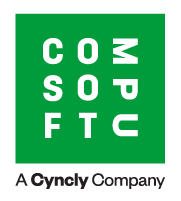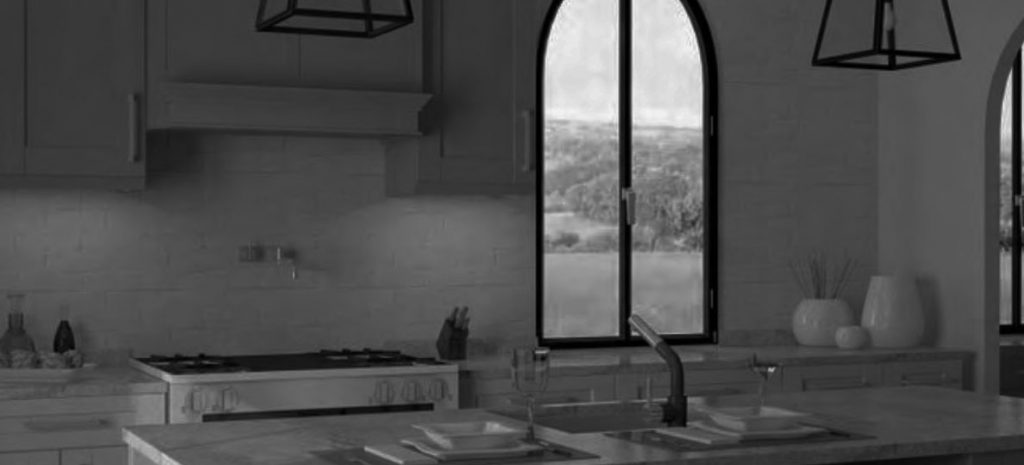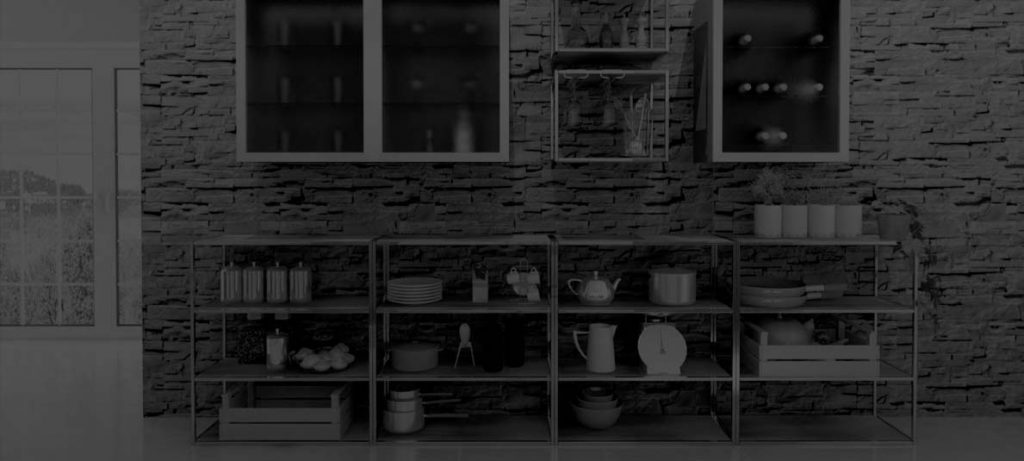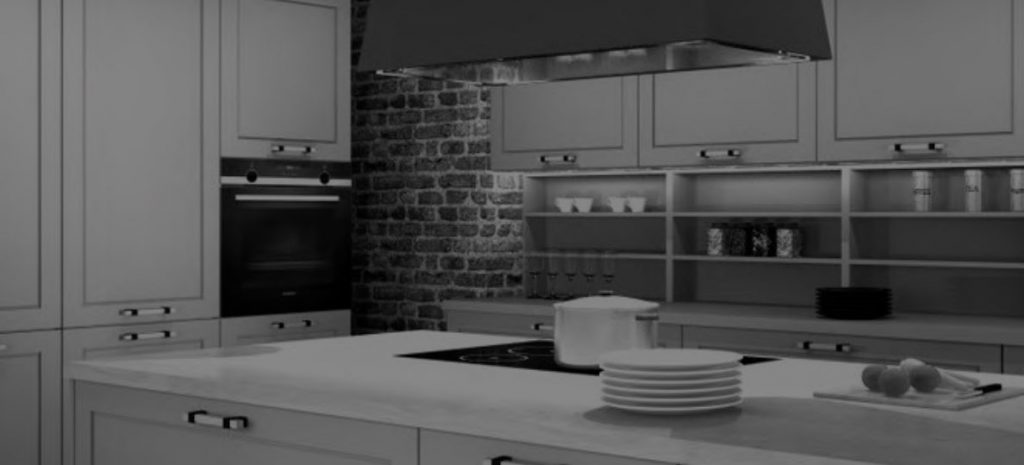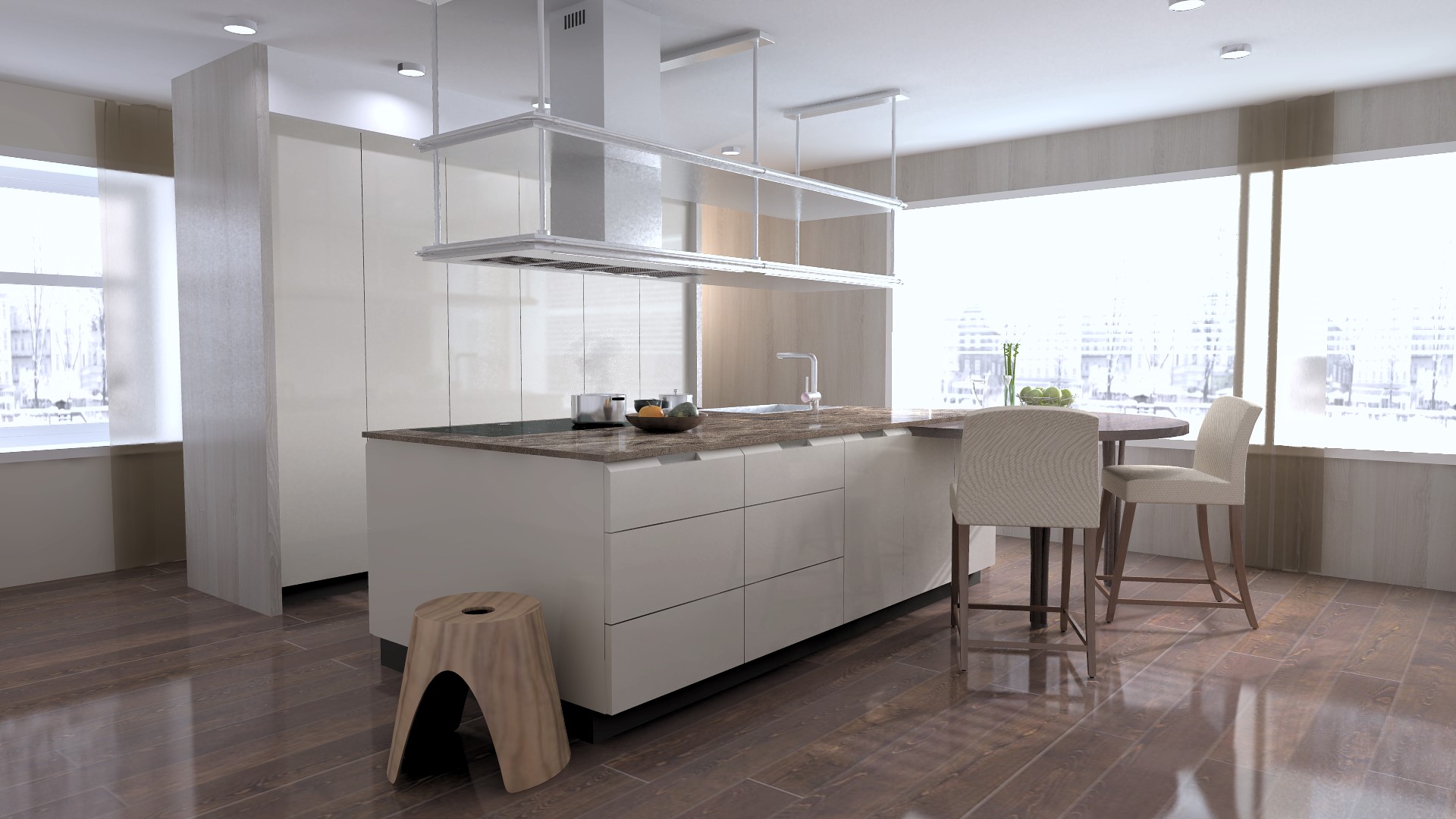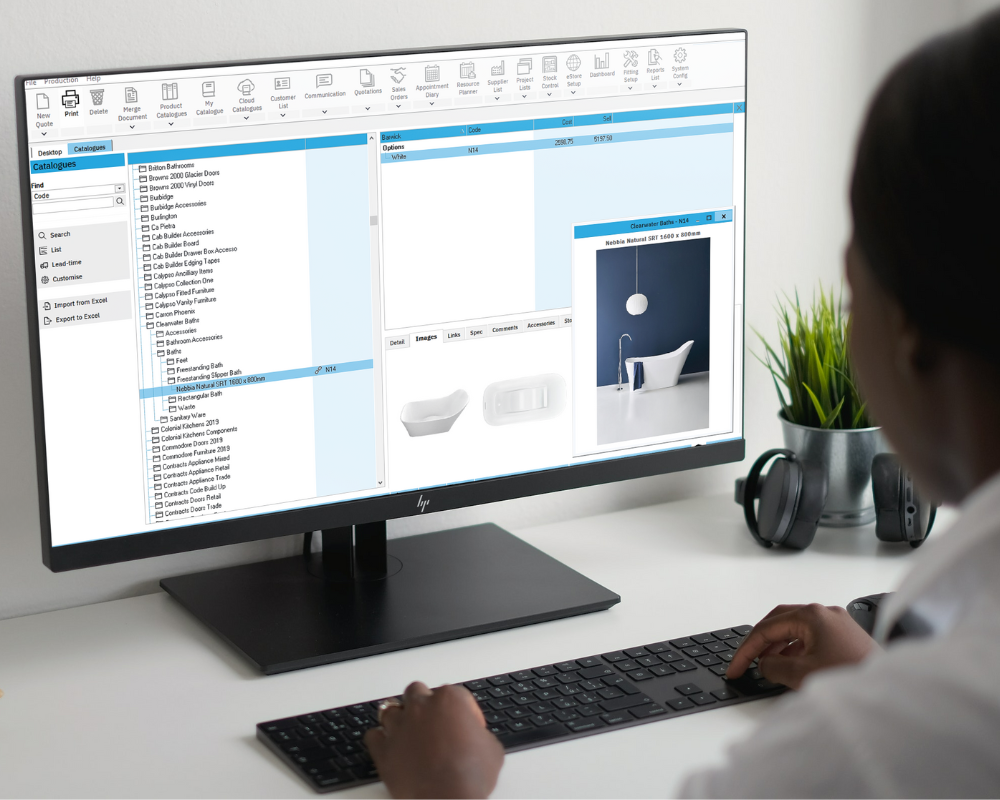Sustainable Kitchen Design – Advice for designers and buyers
March 20, 2023
This article includes extracts from our exclusive download Guide To Sustainable Design, which also includes reports on Sustainable Innovations and Water Matters.
With the focus intensifying on climate change and the environment, homeowners are becoming increasingly concerned about consumerism and the impact their purchases might have on the planet.
The latest data from Houzz showed that for 35% of users, improving energy efficiency is an important factor in home renovations, and for 15% of users, integrating “green” materials is an essential factor. The company states that as awareness of our impact on the environment and climate change increases, “we expect to see a more mindful approach to design next year, with homeowners choosing materials based on longevity and timelessness, and natural materials with biophilic properties, like wood, cork and stone becoming even more popular”.
Biophilia – humans want to connect with nature!
According to Houzz, biophilia – the innate human instinct to connect with nature, has been a key design principle throughout this year and will continue to be seen in interior choices, such as colour palettes and materials. This is completely complementary with sustainable living and this trend, which focuses on bringing the outdoors in, shows no signs of subsiding, with natural materials and nature-inspired tones continuing to be popular on Houzz in 2022.
Finally, homeowners are not as trend-led as they once were. And if they are, they are tending to make choices they think they can live with for longer. Gone are the days of having cheap kitchens and bathrooms fitted every eight to 10 years. Now homeowners are more inclined to pay a bit more for quality products that they know will last, and that will look great for years, which is generally good news for independent KBB retailers.
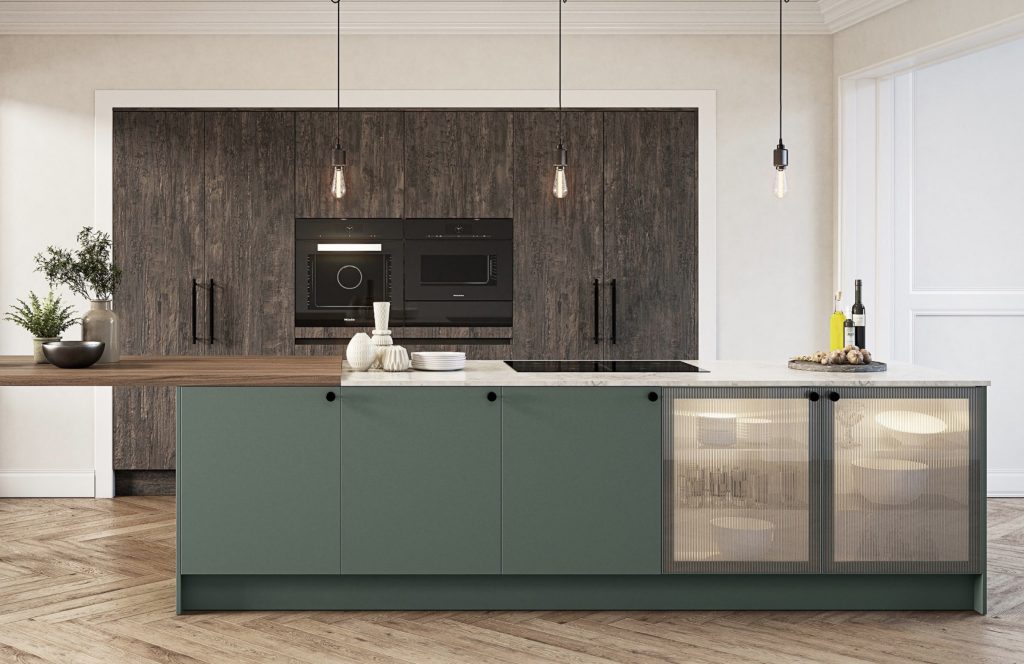
Inspired by a growing love for urban ecodesign, Renzo by Daval is a sustainable kitchen concept with rich textural variety. Available in a choice of five new high texture door finishes by Daval, the collection is built from 100% recycled materials.
Sustainable kitchen design advice for buyers
1. Use sustainable or recyclable materials
When it comes to designing a sustainable, eco-friendly kitchen, the materials you choose are crucial. Opt for materials that are locally sourced, FSC certified, or made from recycled content. Consider using natural materials like wood or concrete flooring, which look great and have a low impact on the environment.
To reduce your kitchen’s carbon footprint, look for fully recyclable materials, like recycled glass or salvaged materials from local salvage yards. This will save resources and give your kitchen a unique, timeless style.
2. For kitchen Cabinets, consider reclaimed and salvaged materials
When choosing kitchen cabinets, look for those made from sustainable materials or materials with a low environmental impact, like melamine-faced chipboard. If possible, use reclaimed materials or salvaged materials, or source second-hand units. Alternatively, look for ones made from recycled materials, or paint existing ones using paints with a low VOC (volatile organic compounds) content.
Remember, even if you are reusing materials, a design professional armed with kitchen design software such as Winner Flex can help you visualise and maximise your new sustainable kitchen before you hunt down the materials.
3. Think Energy Efficient
One of the most significant ways to reduce the carbon footprint of your kitchen is to focus on energy efficiency. Consider investing in energy-efficient appliances, like those with an energy rating label. This will help you to save energy, reducing your energy consumption and the kitchen’s carbon footprint.
Energy-efficient lighting such as LED lighting is a great way to ensure less energy is used by your kitchen. Energy efficient lighting is not only energy efficient but also provides bright task lighting. Installing boiling water taps can also help to save water and energy, allowing you to have hot water at the touch of a button without the need to boil a kettle.
The new Fenix door range by Rotpunkt is a soft and resilient high-pressure laminate solution that offers enhanced antibacterial properties. It’s shown here in Fenix Green.
Summing up
Designing a sustainable kitchen means making choices that reduce your environmental impact while still creating a beautiful, functional space. To create a dream kitchen that meets your needs, work with kitchen suppliers or kitchen companies that specialise in eco-friendly kitchens.
When designing your kitchen, consider the project’s carbon footprint and the impact that it will have on the environment. A new kitchen exchange or a new lease of life for your existing kitchen is a great opportunity to make changes that will reduce your environmental impact.
Incorporating sustainable materials, like those made from recycled content or locally sourced, will make your kitchen more environmentally friendly but also give your kitchen a unique and timeless style. Consider using water-based paints with a low VOC content and opting for a single-cup coffee machine over a traditional coffee maker.
Sustainable kitchens are not only good for the environment but also your well-being. Reducing energy consumption, you can save money on your bills and create a healthier, greener home.
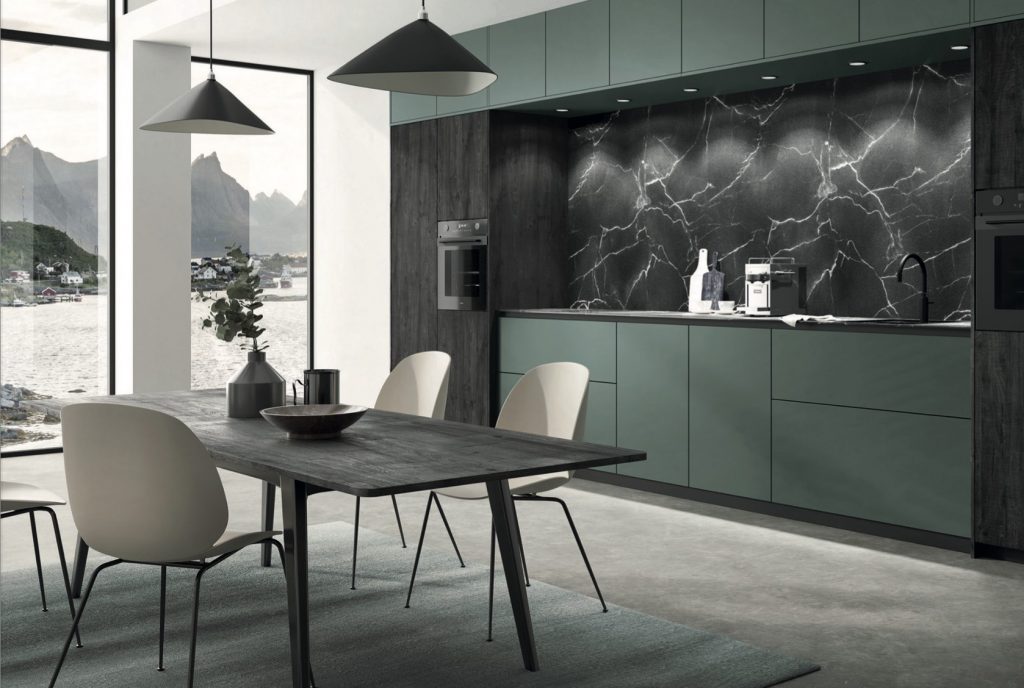
The new Fenix door range by Rotpunkt is a soft and resilient high-pressure laminate solution that offers enhanced antibacterial properties. It’s shown here in Fenix Green.
Sustainable kitchen design advice for designers
1. Great design is crucial
Because consumers want their kitchens to last longer, thoroughly considered design and future-proofing are even more important considerations. Designers need to take into account the whole future lifespan of the kitchen and perhaps work around existing appliances, as Steadman suggests. This is where great CAD software comes into its own, allowing the designer to play and experiment with ideas and layouts until the optimal one arrives..
Julia Steadman, commercial director at luxury retailer Brandt Design comments: “We are finding that our customers are well-versed in sustainability and are keen to learn about new developments, whether that is made-to-measure quartz surfaces which mimic the look and feel of marble or the latest shades of eco-friendly paint suitable for a classic painted kitchen project.”
The white house by Brandt is painted in Farrow & Ball paint, which is made with an eco-friendly water base. That means it is safer, faster-drying, lower in odour and VOCs, and better for the world we share.
2. Ask the right questions of your customer
How you get there as a sustainable kitchen designer depends on your questions. What is the lifestyle of the client like? Might this change significantly over time and might these potential changes need to be factored in? Does anyone in the household have mobility issues? Are there children? Or are there likely to be?
Look at the current kitchen layout and determine what does or doesn’t work for the client. Think carefully about the arrangement of appliances and go through with the client all of their potential options to find a solution which will work best for the long term.
Make sure you discuss a range of different options for furniture, worktops, and energy-efficient appliances with the customer – offer “good”, “better” and “best” for them to choose from, even if you think “best” might be out of their price range. When upselling sustainable products, it isn’t just about making a bit more profit but about value over time.
3. Consider ergonomics to maximise space
Offering some general advice, Matt Philips, head of UK operations at Rotpunkt, continues: “Ergonomics and space-planning is key to enhancing efficiency and we are finding that extra-tall units are proving a popular way of optimising floor-to-ceiling storage, alongside the use of glass-fronted vitrines which offer an element of display storage while keeping crockery and glassware close to hand.”
Inspired by a growing love for urban ecodesign, Renzo by Daval is a sustainable kitchen concept with rich textural variety. available in a choice of five new high-texture door finishes by Daval, the collection is built from 100% recycled materials.
Remember that extra-tall units can be excellent space savers but only if they are accessible, even if they are only occasionally accessed.
Naval’s managing director Simon Bodsworth, meanwhile, believes that creativity and customisation should be critical parts of the customer journey, “so a combination of solid experience with an eye for innovation will be crucial so that developer and installers can offer the best of both worlds”.
Key Takeaways
- Ask plenty of questions and make sure present and potential future scenarios are in your plans
- Work around existing appliances if possible and if that is the most sustainable solution
- Try and upsell to products with extended guarantees
This article includes extracts from our exclusive download Guide To Sustainable Design, which also includes reports on Sustainable Innovations and Water Matters.
